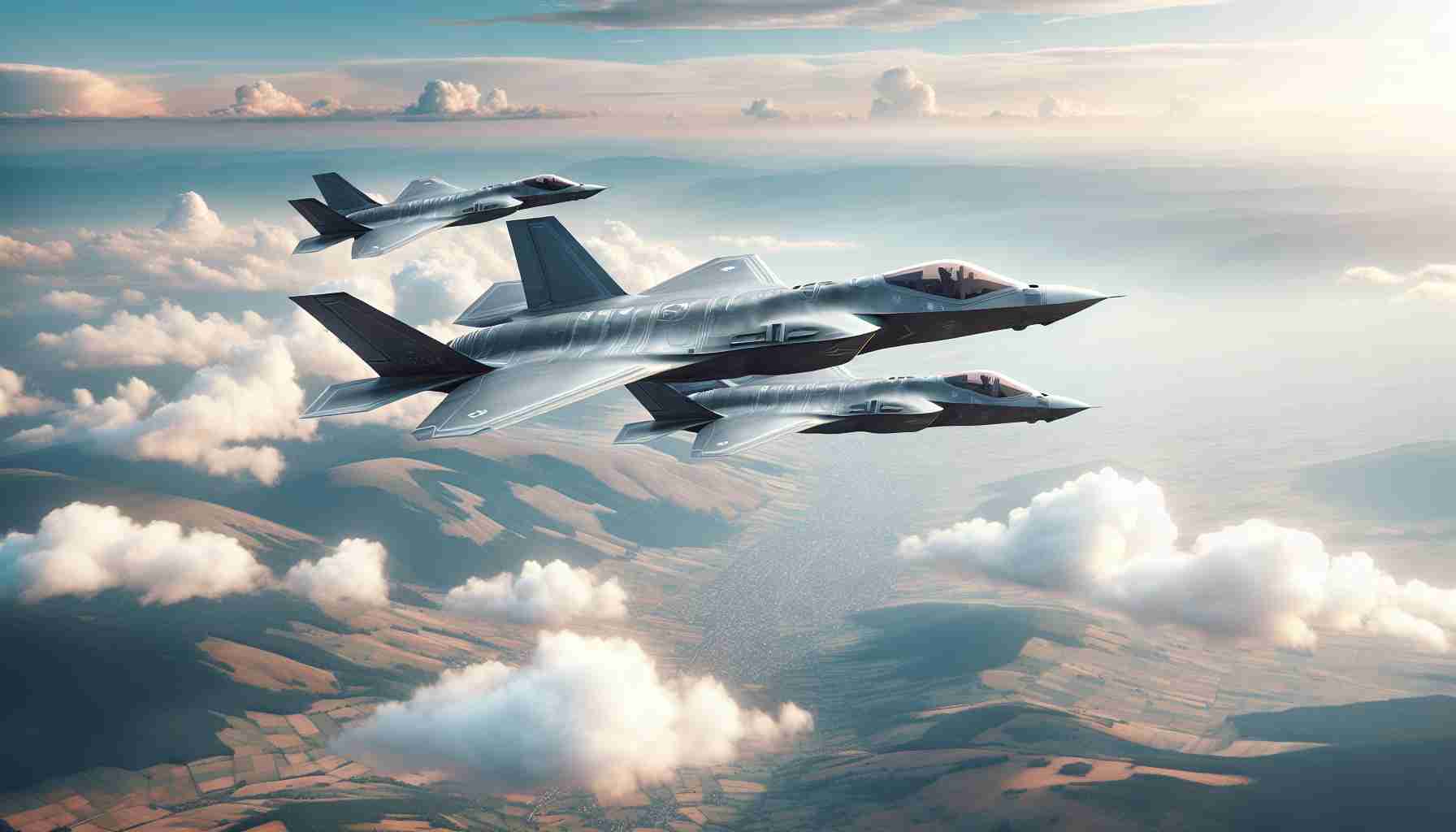Romania is taking a significant step in strengthening its military capabilities by committing to purchase 32 F-35A stealth fighter jets from the United States. The agreement was confirmed by the signing of the Letter of Offer and Acceptance (LOA) under the Foreign Military Sales (FMS) program. This major transaction, exceeding $7.2 billion, received authorization from the U.S. State Department in September.
The acquisition of the F-35A aircraft is expected to bolster Romania’s defense capability within NATO. The advanced fighter jets will offer Romania unmatched operational and strategic advantages. The F-35 Joint Program Office is dedicated to supporting Romania through a seamless transition, providing comprehensive support to its pilots and maintenance teams.
This purchase marks only the first phase of Romania’s ambitious plan, with a future purchase of an additional 16 jets anticipated. By joining the ranks of F-35 operators, Romania becomes the 20th member of an elite group with over a thousand F-35 aircraft in service worldwide.
Romania’s relationship with Lockheed Martin is not new. Previously, the country acquired F-16 jets to replace its aging Soviet-era MiG-21 aircraft. Additionally, Romania is host to the new European F-16 Training Center, a collaborative effort with the Netherlands, crucial for training future Ukrainian pilots.
This acquisition is part of Romania’s broader military modernization plan, aligning with NATO requirements and addressing regional security concerns, such as the conflict in Ukraine. Furthermore, Romania is enhancing its air defense with Patriot missile systems and preparing to receive K9 Thunder self-propelled howitzers from South Korea. The country is also evaluating replacements for its T-85 Bison tanks, considering the K2 Panther from South Korea and the M1A2 Abrams from the United States.
Unveiling the Future: How Romania’s Military Enhancements Influence Global Tech Development
The Impact of Advanced Military Technology on Humanity and Innovation
Romania’s decision to purchase 32 F-35A stealth fighter jets is not just a leap in military capability; it represents a broader trend of technological integration and geopolitical rebalancing. While the initial announcement highlighted Romania’s strategic alignment with NATO and efforts to modernize its military, there are several unforeseen consequences and developments stemming from this acquisition.
Interesting Technological Insights and Global Implications
The F-35 jets are not merely high-performance aircraft; they are floating data nodes, integrated heavily with state-of-the-art technology. These jets enhance a nation’s air superiority while also influencing a broad spectrum of technologies—many of which transition into civilian use.
1. Technology Transfer and Civil Impact: The technology within the F-35 program involves advances in materials science, cybersecurity, and software development. History shows that military technology often migrates to civilian sectors, sparking innovation in areas like air traffic management, telecommunications, and even autonomous vehicle systems.
2. Boosting the Domestic Aerospace Sector: Romania’s military investments can stimulate its domestic aerospace and defense industries. This can lead to job creation, skill development, and the emergence of local tech hubs that collaborate with Western companies, potentially elevating Romania’s position on the global aerospace stage.
3. Enhancing Cybersecurity Measures: The integration of stealth technology and aircraft networking systems inevitably means an increased focus on cybersecurity. Romania could become a pivot for cybersecurity research and solutions, both within Europe and globally.
Controversies and Ethical Considerations
However, alongside these advancements come concerns and controversies:
– Escalation of Arms Race: The F-35 acquisition could provoke neighboring countries to bolster their own defenses, igniting an arms race and potentially heightening regional tensions—a scenario reminiscent of Cold War-era strategies.
– Economic Strain: With a significant portion of the national budget directed towards military expenditures, questions arise about foregone opportunities in social services or infrastructure development.
Advantages and Disadvantages for Humanity
– Advantage: Enhanced national security and international prestige can lead to political stability and economic growth, creating a safer environment conducive to investment and technological progress.
– Disadvantage: The reliance on military technology as a cornerstone of national advancement might skew resources away from other critical areas like education, healthcare, or renewable energy innovations, which also have long-term societal benefits.
FAQ: Addressing Common Questions
– How does this purchase affect Romania’s diplomatic relations? This acquisition strengthens Romania’s ties with the United States and the broader NATO alliance, reinforcing diplomatic bonds through shared technology and defense initiatives.
– Will this impact Romanian civilian industries? Absolutely. Defense contracts often lead to spillover effects, accelerating technological adoption in civilian industries through procurement contracts, workforce training, and shared research.
For further reading on technological transitions and military aerospace development, visit Lockheed Martin and NATO.






















